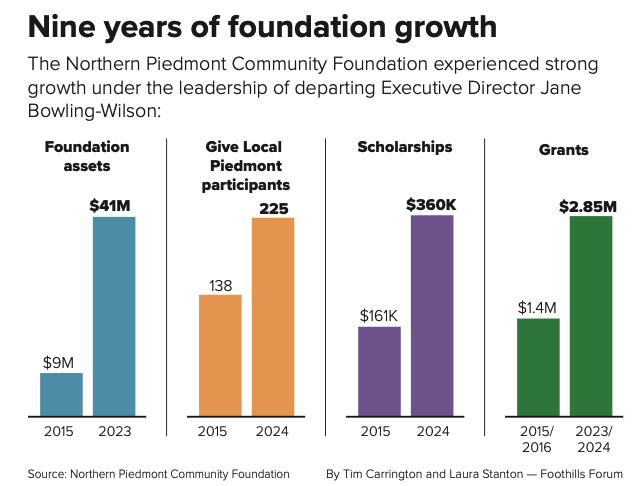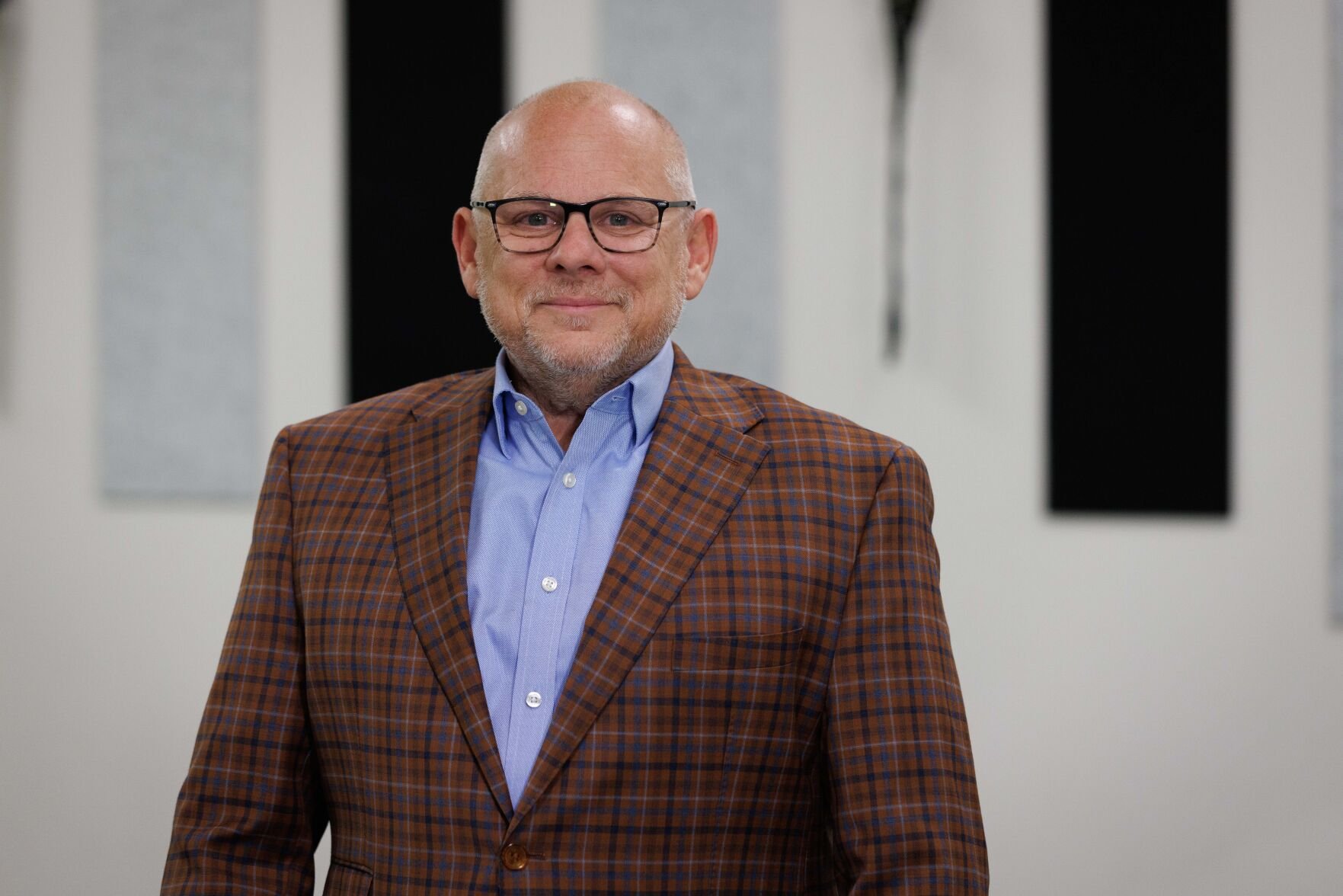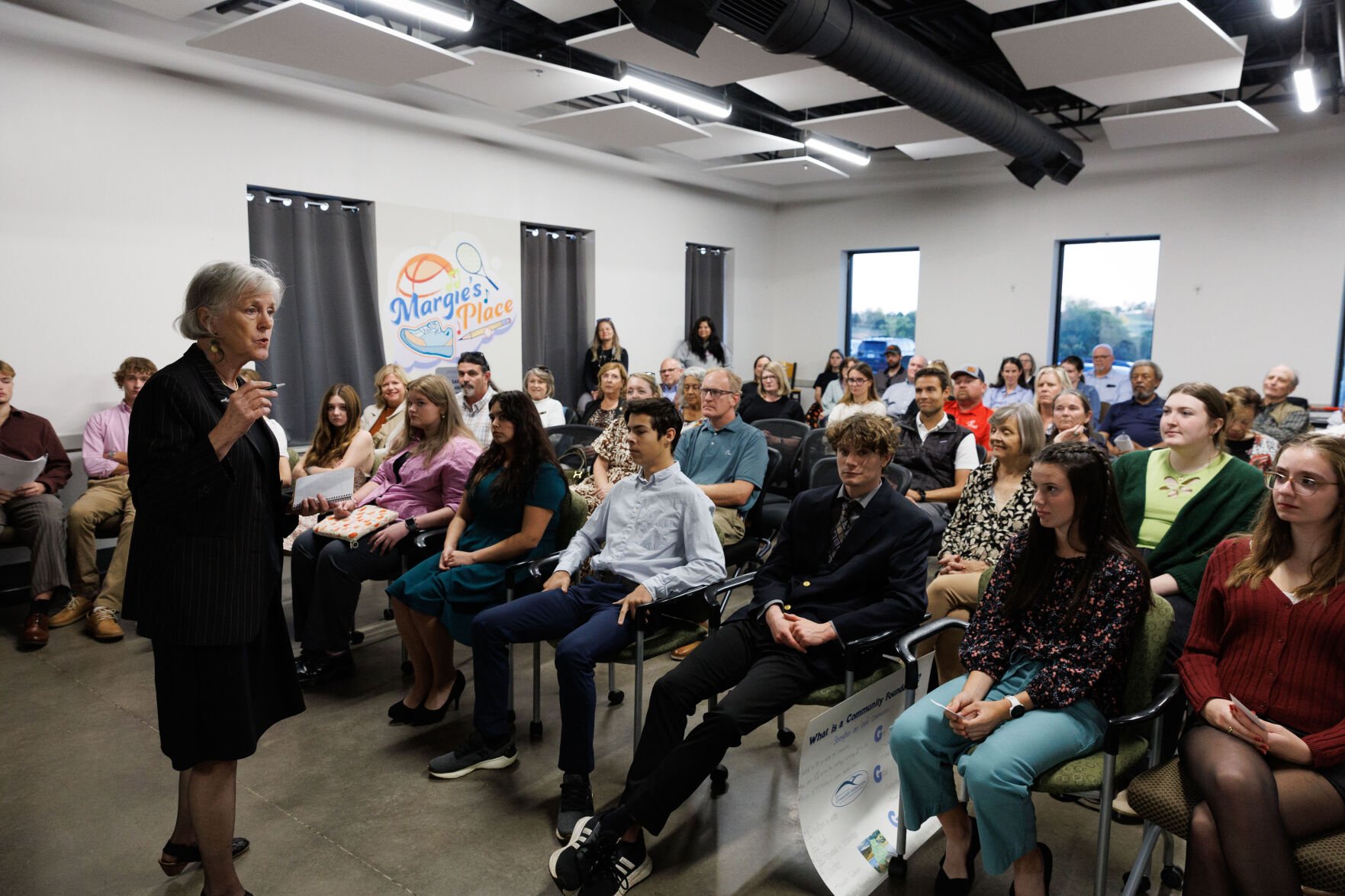‘Fearless, tireless’ community leader
Jane Bowling-Wilson, educated in fine arts and teaching, wasn’t the obvious choice when she was tapped 10 years ago as executive director of the Northern Piedmont Community Foundation (NPCF), a regional philanthropic enterprise addressing a slew of community needs in Fauquier, Culpeper, Rappahannock and Madison counties.
But career paths don’t always follow straight lines. When Bowling-Wilson concludes her decade-long stint in January – handing the reins to Jim LaGraffe, who has headed Encompass Community Supports for nearly seven years – she and the team she assembled can point to a string of achievements:
• NPCF, like other community foundations, oversees the return on assets entrusted by the region’s donors. Assets managed by NPCF more than quadrupled to $41 million from $9 million in 2015.
• Give Local Piedmont, an annual one-day online campaign that mobilizes funds for local nonprofits, surged to 225 participating organizations this year, up from 138 in 2015. Donations, initially $700,000 in 2015, have exceeded $1 million for each of the past four years.
• Total grantmaking by NPCF rose to $2.85 million in the 2023-2024 grant cycle, up from $1.4 million in 2015-2016. Scholarships reached $360,000, more than doubling $161,000.

Jane-Bowling-Wilson-retirement-GRAPHIC-FF
‘Fearless, tireless’
“The one word I would use to describe Jane as a leader is fearless,” said Dede McClure, the foundation’s senior program officer. “I never heard her hesitate.”
Bowling-Wilson was fully aware that her arts-oriented education at the University of Mary Washington and later the Corcoran School of Art didn’t prepare her for the challenges of running a community foundation: cultivating donors, managing millions of dollars of their assets, and working with an array of nonprofits. In response, “she was tireless,” said Rappahannock’s Rick Lessard, a former NPCF board member.
And Bowling-Wilson herself leaves little doubt that she has loved her work. “We get, we grow and we grant,” she said. “It’s a seed planting business.”
Key supporters during Bowling-Wilson’s term as executive director paved the way. Throughout, the PATH Foundation has brought in funds to leverage money that other donors contributed. In 2021, PATH helped bring the Dupont Legacy Fund for Fauquier County under Northern Piedmont’s roof, raising the foundation assets to $39 million, from $29 million.

2024-10-22-FF-Boling-Wilson_LaGraffe-4.jpg
Encompass Community Supports Executive Director Jim LaGraffe is resigning from his position effective Dec. 13. LaGraffe will begin leading the Northern Piedmont Community Foundation in January upon Jane Bowling-Wilson’s retirement.
“I think where Jane and I are similar is in an ability to build on relationships,” said LaGraffe. One difference will be the size of the operation itself. Encompass, recently rebranded from the wordy Rappahannock-Rapidan Community Services, has 425 employees funding and mobilizing a mix of services to populations in need. “We have a staff of 3.5,” Bowling-Wilson said. “And one of them works remotely.”
The search, the leap
In 2015, the NPCF, one of the now 900 U.S. community foundations, conducted a nationwide search for a new executive director. The organization needed to grow.
Under the structure employed by philanthropies like NPCF, the sums available for grants were strictly tied to the return on invested assets, seldom more than 5% of the total. The assets pool under $10 million wouldn’t generate enough to make an impact across four counties, where health needs, housing stresses, and educational gaps were multiplying. Other such funds in Virginia, with its now 107 community foundations, were far larger, some greater than $100 million.
The search to replace previous Executive Director Cole Johnson concluded with no candidate emerging with decisive support. Someone suggested Bowling-Wilson, then the executive director at Headwaters. She wasn’t seeking a new job, and she lacked experience in financial management, and working across counties. But her knowledge of nonprofits in the region was impressive, and her personality made it clear that she got things done. As a former teacher, she passionately believed that people, herself included, could learn what they didn’t already know.
“It was a leap of faith,” said Lessard.
Work from strength
Bowling-Wilson worked from her strength – knowledge of the communities and their various nonprofits, plus relationships with a number of donors. For the financial and investment side, she has relied on an investment committee, plus four wealth management companies.
Accounting and transparency, “have been huge,” she said, proud to have steered the organization through nine audits that produced only clean bills of health.

2024-10-22-FF-Boling-Wilson_LaGraffe-7.jpg
Northern Piedmont Community Foundation Executive Director Jane Bowling-Wilson addresses a group of students at a Youth in Philanthropy event in Culpeper last Tuesday.
The funds under the foundation’s management break down to seven distinct groups, the largest being “donor assisted funds,” where families or organizations break off a section of their assets, designated exclusively for charitable contributions, resulting in an immediate, and usually significant, tax deduction. Then the donors, or their heirs, weigh in on how the manager of the fund (in this case NPCF) disperses these tax-exempt assets. Northern Piedmont shows 53 donor assisted funds under its management.
Categories and directions can be broad, so that a foundation like NPCF might propose projects that are looking for backing. Often multiple donors attached to funds at NPCF agree to contribute.
For example, during the COVID crisis, Bowling-Wilson mobilized funds for people and organizations undergoing particular stress. Amid nationwide protests of police violence, she learned that Culpeper police teams were trying out patrols that included mental health specialists alongside law enforcement officers, and she scurried to see how Northern Piedmont and its various funds might provide support.
Perhaps her favorite recent involvement has been a three-year-effort known as Youth in Philanthropy. The current group consists of 15 teenagers from six public schools and three private schools. Coached by Bowling-Wilson and others, they study nonprofits that affect the lives of children and young adults in the region, deciding after 10 weeks how to distribute $10,000 in grants. She hopes the participants will grow into adults who “ask what could make them more effective in their communities.”
Bowling-Wilson is humorous, friendly and forthright. She is also protective of her privacy. Asked her age, as many are upon retirement, she graciously refused to say. Then she added: “I have always been able to run fast, and work harder. I have great genes.”






